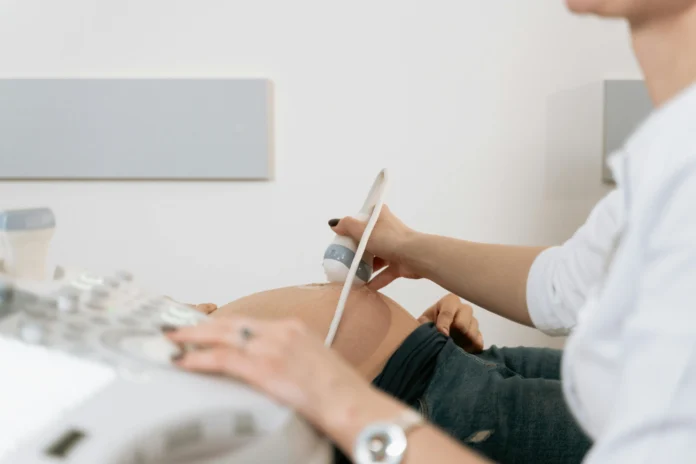Mississippi has the highest maternal mortality rate in the United States. It also leads the nation in infant mortality. These statistics indicate significant challenges in Mississippi’s maternal healthcare system. In response to these challenges, a new digital tool has been developed: the Mississippi Medicaid Prenatal Care Database will be introduced.
Developed by the Myrlie Evers-Williams Institute for the Elimination of Health Disparities (MEWI) at the University of Mississippi Medical Center (UMMC), this interactive tool aims to improve access to prenatal care services for expecting mothers by connecting them with available healthcare providers in their area.
Why the Mississippi Medicaid Prenatal Care Database Matters
If you’re reading this, you might assume that finding a prenatal care provider in the U.S. is as simple as a Google search. In many states, that might be true. But not in Mississippi.
In Mississippi, women are more likely than anywhere else in the country to lose a baby before its first birthday. The state also has the highest rate of maternal deaths in America. Chronic illnesses, a high number of uninsured residents, and the severe shortage of OB-GYNs in rural areas result in limited access to maternal care in many areas “maternity care deserts.”
Additionally, cases of untreated infections such as syphilis, gonorrhea, and chlamydia have increased significantly, creating additional health risks for pregnant women. According to MEWI, syphilis cases in women have skyrocketed by over 1000% in the past decade. When untreated, syphilis can lead to miscarriages, stillbirths, and severe infant complications including brain damage. And it’s preventable with a simple shot of penicillin.
A Map With a Mission: Inside the Mississippi Medicaid Prenatal Care Database
The new database—available at UMMC’s Evers-Williams Institute—features an interactive map where users can search by:
- County or ZIP code
- Clinic name or address
- Specific services offered
Each location includes a rich data profile:
- Full clinic name and address
- Google Maps link
- Phone number and website
- Opening hours
- Whether it offers prenatal care
- Family planning services
- Acceptance of Medicaid or pending Medicaid eligibility
It’s not just a list—it’s a decision-making tool designed for real-life situations. A mother-to-be in a rural county with no OB-GYN can immediately see where the nearest care facility is, how to contact them, and whether they’ll accept her Medicaid status.
Designed for People, Not Just Policymakers
There’s also a parallel version of the dashboard built specifically for providers and policymakers, allowing them to visualize gaps in service coverage and plan interventions. But the heart of this database is clearly the individual: the mother scrolling through her options, trying to find someone who will answer the phone.
If you scroll below the map on the database page, you’ll also find a county-by-county breakdown of providers, listing them by name and service category. This makes the tool accessible even for those with limited digital literacy or unstable internet connections.
Bridging the Gap Between Policy and Practice with the Mississippi Medicaid Prenatal Care Database
This tool doesn’t exist in isolation. It’s part of broader efforts to address Mississippi’s maternal health challenges. In June 2025, U.S. News and the Sitka Sentinel reported on the launch of the tool, citing it as a rare example of how technology can actually close the gap between Medicaid policy and front-line care (US News, Sitka Sentinel).
It’s also part of a broader movement toward data-driven healthcare access, aligning with other federal initiatives such as the Medicare Coverage Database that centralizes healthcare information for public use.
Practical Use: A Case Example
Imagine a 23-year-old expectant mother in rural Holmes County, Mississippi. She doesn’t have a family doctor. Her Medicaid application is still pending. Using the tool, she finds a clinic two counties over that:
- Offers both prenatal and family planning services
- Accepts pending Medicaid status
- Lists a working phone number and daily opening hours
This isn’t hypothetical. It’s exactly what the tool is designed to enable: timely, informed decisions in a system that often leaves low-income patients navigating a maze.
Final Thoughts: Small Tool, Big Impact
While online tools have limitations in addressing complex healthcare challenges, the Mississippi Medicaid Prenatal Care Database represents one approach to improving access to care. It delivers critical, localized, and timely information to the people who need it most.
The fact that it’s public, free to use, and designed with human-centered logic makes it a standout in the world of health data platforms. It addresses information gaps that often exist in Medicaid systems.
The tool represents a step toward improving access to prenatal care for expecting mothers in Mississippi.
As digital tools become more central to how Americans navigate public services, the value of transparent, user-friendly databases continues to rise. Whether you’re looking for prenatal care through Medicaid in Mississippi, exploring your options with Medicare databases, or trying to locate unclaimed policies via life insurance databases, one thing is clear: access to reliable, well-structured information is no longer a luxury — it’s a necessity.
Sources
- University of Mississippi Medical Center. “We Need to Talk” Prenatal and Family Planning Map
- US News. New online tool helps women on Medicaid find prenatal care and family planning
- Sitka Sentinel. New Online Tool Helps Women on Medicaid


